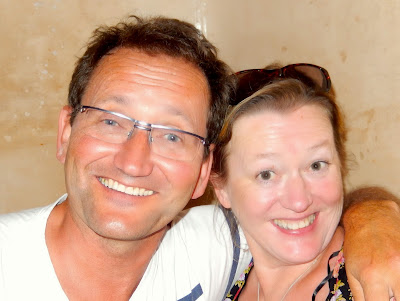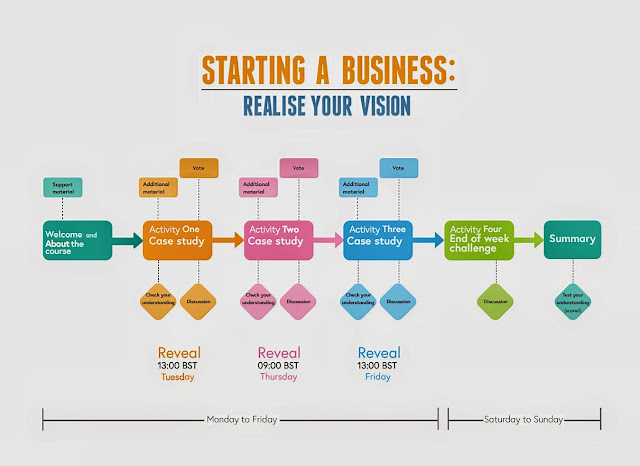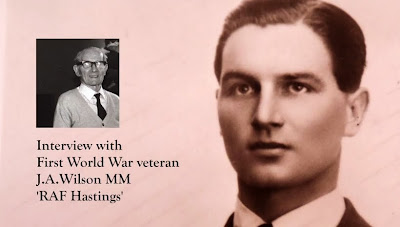 |
| From E-Learning V |
Fig.1 This is what a reading list looks like - too much of a good thing makes it a bad thing
I 'do' e-learning for two reasons:
- love of a subject, or a desire to fill holes or build mountains in my knowledge
- fascination in e-learning: what works and what does not.
FutureLearn is a magic platform
I love it's simplicity, clarity and intuitiveness. In the right hands it's the perfect cup of coffee. (and once a day takes about as long to consume)
Classy copy
The considered, edited and crafted content doesn't dick about: it is a brief talk, or walk and talk BBC documentary style opening (video), followed by a a dozen paragraphs of a succinct piece of required reading that is then opened to the 'floor'.
'Connectedness' is enabled
The threaded discussion looks more like this bulletin-board cum blog cum student forum. Perhaps, as this has developed over the last decade, is where the idea came from? As a bulletin-board each time you comment your thoughts are placed on the top of the pile: someone has to read it when they log in, or at least there's a greater chance of that.
This connectedness is facilitated and encouraged further by alerts you get as others comment in a thread you've contributed to or started.
Your contributions are sorted for you and so build, without you needing to do so yourself, into a threaded line of thought - you can see how you are learning, how your knowledge improves and your ideas develop.
There are parameters
There is a word count for each posting. 1200 characters I think and a time frame during which you can edit (15 minutes).
There is a modicum of overload
We, as students, are the masters of the time we have, or want to give to a thing. We are also the ones who know and control the pace. It is too simple to say that some people read faster than others, so can consume more. We approach text in very different ways. What is crucial and done in the FutureLearn module I'm doing on the 1919 First World War Paris Treaty is the amount of reading offered. It is more than enough, but not overwhelming. It takes itself and its students seriously by saying that 'we think you can read all of this and contribute to the discussions in the time allocated - five hours a week'.
Module teams get it wrong when content is sparse or when they overload the student with that laziest of get-outs 'the reading list'. Getting it right requires effort, confidence in the subject you are teaching and a belief and understanding of the way people learn and the platforms and tools now available and how their evolving use impacts on learning. I'm doing a couple of FutureLearn modules: 'Writing Applications' at two hours a week, compares to World War 1: Paris 1919 at five hours a week. The contrast couldn't be greater.
It's like the first offers you a small cup of coffee: no refills. Instant. You get it with milk whether you like it or not. While the second gives you a rich cup of coffee and, if you want them, a couple of refills. No more. There are parameters.
FutureLearn keeps it simple
What matters are the words people type. There are none of the mess of unnecessary buttons provided here. Honestly. Keep it simple OU. They just muddle things massively. Where used they invariably take away from the ability to communicate. It is enough of a challenge to type on a QWERTY keyboard. Plain text does the job. In the hands of the amateur (all of us), being able to add colour, change font size and a whole lot more serves no useful purpose.
Content is self-moderated by the group
A simple alert button allows you to flag something to let moderators know that something inappropriate is going on: hateful language, foul language, 'drunken' rants ...
'There's something for everyone'.




















